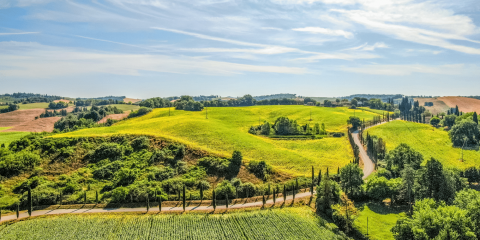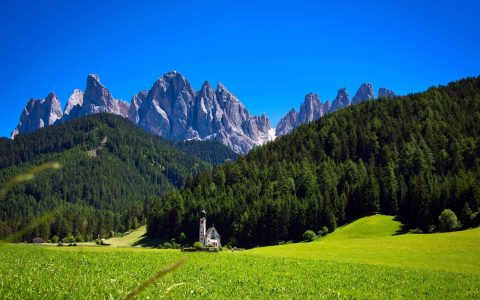The Trulli of Alberobello

Their origin remains a mystery, though we know one thing for sure: trulli, those small, idiosyncratic, conical buildings, provide Puglia with one of its most recognizable features.
Although similar structures exist elsewhere in the Mediterranean, from Cappadocia in Turkey to Greece, Egypt, Sicily and Sardinia, simply saying the word conjures images of Aberobello and the taste of orecchiette.
Trulli: The Pinnacles of Puglia
The word trulli is thought either to have derived from the Greek tholos (describing similar stone structures) or the Byzantine torullos (referring to a room in the Imperial Palace in Constantinople with a conical roof). The trullo structure itself is built al secco (without mortar), meaning trulli houses can be quickly torn down and rebuilt according to need. In addition, they are cool in summer and warm in winter. Pizza-shaped stones, called chiancarelle, were overlapped to form each trullo’s defining feature, its conical roof. These stones come primarily from the well that was dug during the construction of each trullo.
The roof of each trullo bears a pinnacle of three stones. Some believe the pinnacle has magical significance, while others say it serves merely ornamental purposes. Another theory holds that the pinnacle represents social status, signifying everything from the wealth to the religious loyalties of the trullo’s inhabitants.
See For Yourself
On B&R’s Puglia Self-Guided Biking trip, take in sublime coastal roads, whitewashed towns, fortified farms, and distinctive stone trulli, while savouring the regions abundant culinary delights.
DETAILED ITINERARYAlberobello

The centre of trulli tourism, most of Alberobello’s more than 1,000 trulli have been converted into gift shops.
The town derives its name from the Latin for oak forest, Sylvia Arboris Belli, a reference to the beautiful oak forest that once characterized the area. In today’s Italian, albero bello translates to “beautiful tree.” Today a UNESCO World Heritage site, Alberobello was founded by the Count of Conversano, Giovanni Acquaviva d’Aragona, who wanted to build a town independent of the royal court in Naples.
He forced the farmers living on his land to gather in a settlement and build dry stone structures that could easily be pulled down in case of royal inspections—Acquaviva’s scheme to avoid paying taxes. In 1797, the residents of Alberobello appealed to King Ferdinand IV, and were freed of their onerous feudal bond. Alberobello was granted loyal town status in May of that year.
MORE FROM Italy + Puglia

Take on a Challenge on the White Roads of Tuscany
Tuscany
Reading for the Road: Books About Florence
Tuscany
New Trip Spotlight: Venice to Verona Biking
Veneto
Cuisine 102: Tuscan Delicacies
Tuscany
New Trip Spotlight: Piemonte to Portofino Walking
Cinque Terre
How to Best Experience the Natural Wonders of Umbria
Umbria
Notes from the Road: A Research Trip in Sicily
Sicily
Umbria’s 3 Essential Cities
Umbria
Sustainable Cuisine in Northern Italy: In Conversation with Michelin-starred Chef Norbert Niederkofler
Dolomites
The Origin of the Negroni: Florence’s Favourite Cocktail
Tuscany
The 10 Best Restaurants in Florence
Tuscany
Giro-E: Racing the Giro d’Italia Route on E-bikes
Italy
The Best Villas in Italy: Amalfi, Tuscany and Umbria
Amalfi Coast
A Taste of Piemonte with Silvia Altare
Piemonte
Finding Prosperity in Food & Community in Rural Italy
Puglia
5 Unmissable Tuscan Hilltop Towns
Tuscany
The Most Incredible Hikes in Italy’s Dolomite Mountains
Dolomites
The Best Hotels in Rome for Every Taste
Rome
A Day in Florence: Rediscovering the City with Family Post-Lockdown
Tuscany


